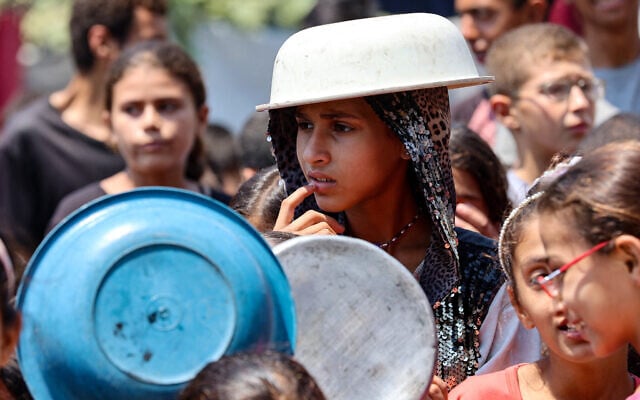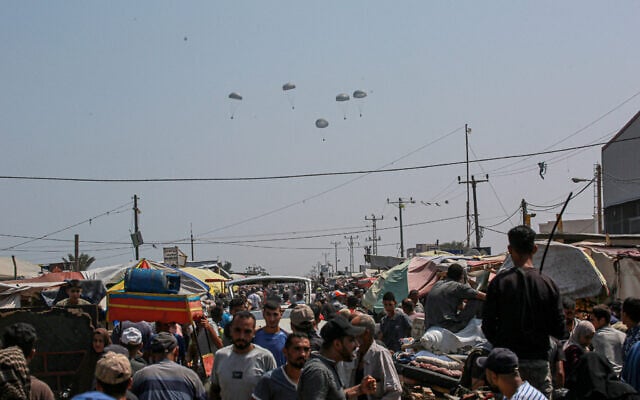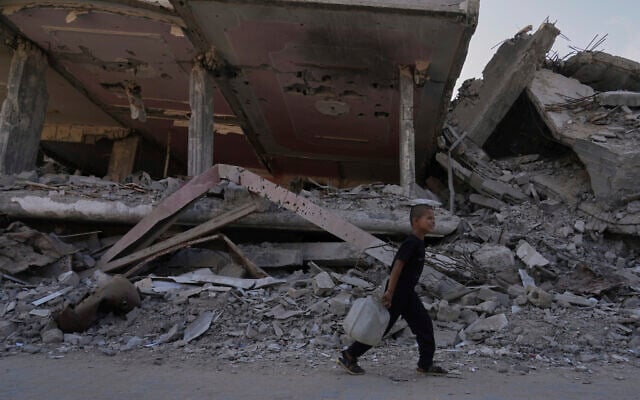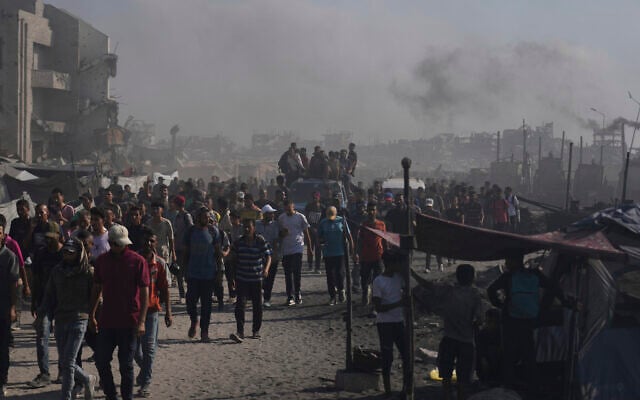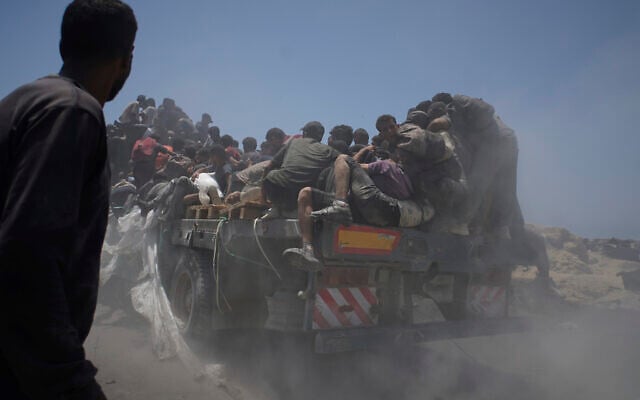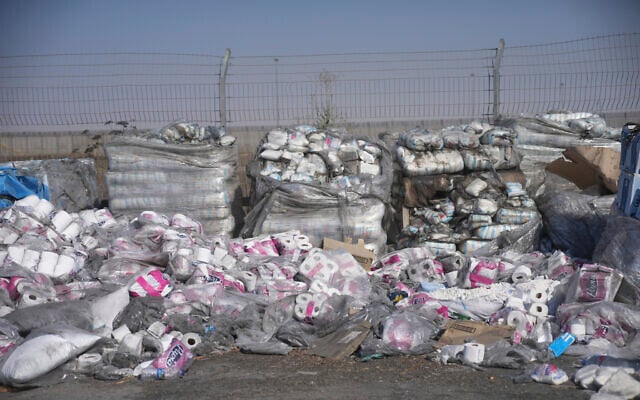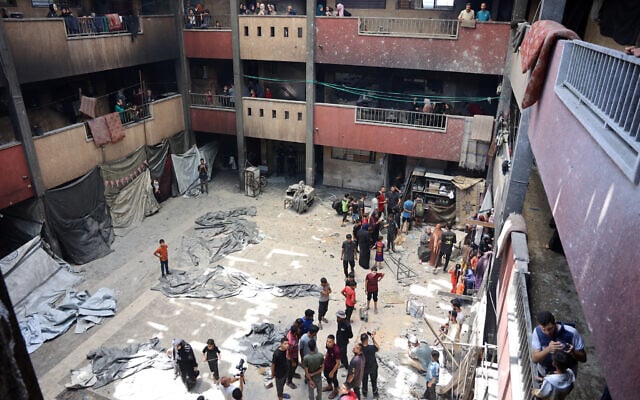


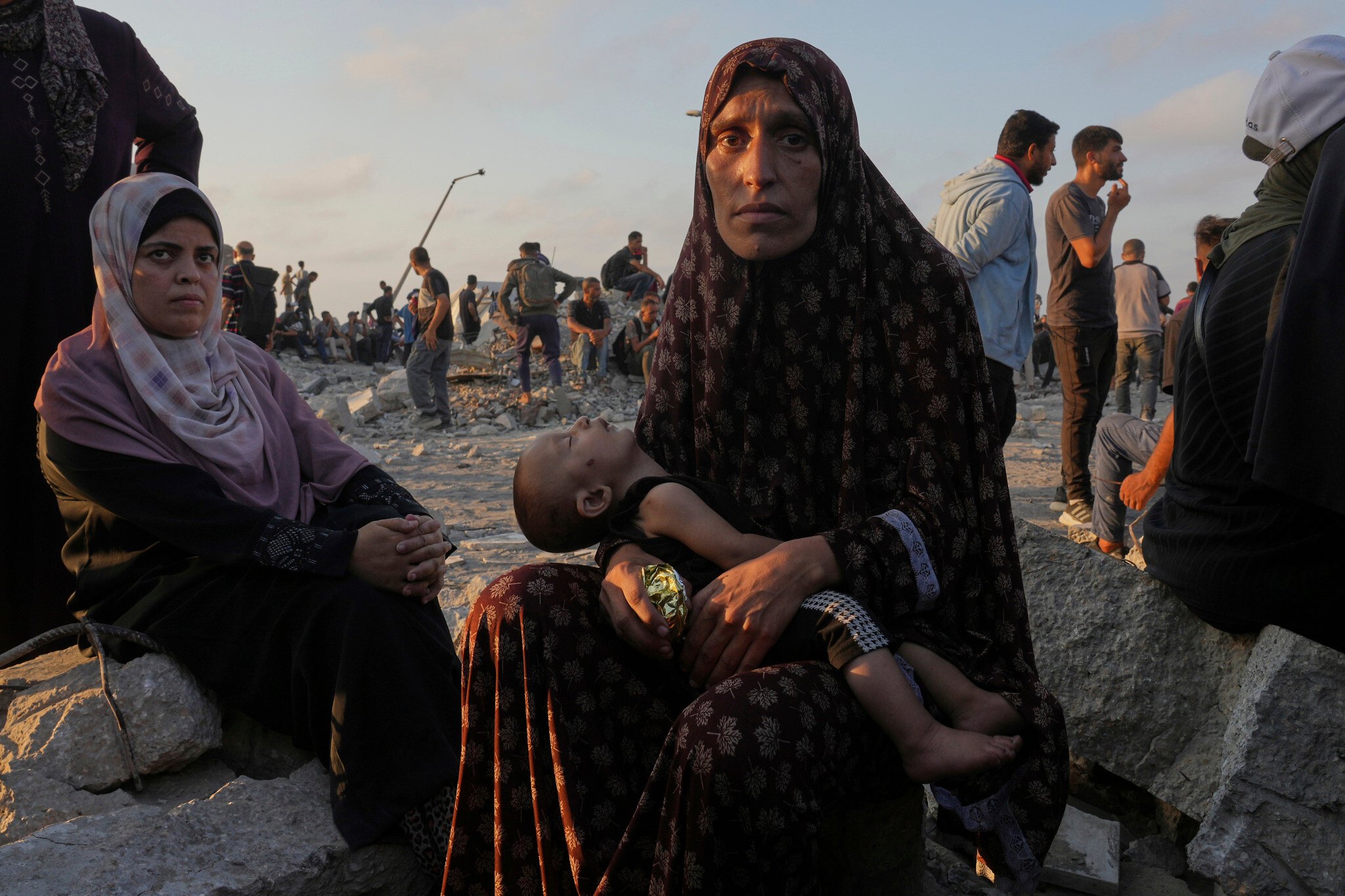
Gaza’s Hamas-run health ministry reported Friday that nine more Palestinians, including two children, had died over the past 24 hours due to complications from severe malnutrition, further raising fears of a spiraling humanitarian crisis in the Strip.
In the past three weeks, at least 56 people died of causes related to malnutrition, including 35 adults and 22 children, the ministry said. That’s up from 10 children who died from such causes during all five previous months of 2025, according to the ministry.
Medical non-profit Doctors Without Borders said a quarter of all young children or breastfeeding women screened at its clinics in the Strip last month were malnourished.
For their part, Israeli authorities continued to maintain on Friday that while the humanitarian situation in Gaza is difficult, there is no widespread famine.
Still, in an apparent recognition of the dire situation, Israel’s Coordinator of Government Activities announced that it would begin allowing the UAE and Jordan to resume airdrops of humanitarian supplies into Gaza.
Last year, the US military, in coordination with Jordan, Egypt and France, airdropped tens of thousands of meals into northern Gaza, although a malfunction in March 2024 killed five Palestinians. The method of aid distribution is far more limited in scope, while costing more money to conduct, leading many international organizations to argue that scaling up other, more traditional mechanisms would be a more effective way to address the humanitarian crisis.
COGAT said in a statement that it continuously assesses the situation in Gaza and, alongside humanitarian aid groups, works to identify “pockets” facing food access challenges to assist those areas.
According to COGAT’s assessments, “there is no famine in the Gaza Strip,” however, it acknowledged that “there are issues of access to food.”
COGAT claimed that images being circulated by Hamas and media outlets of malnourished children in Gaza are not indicative of a widespread phenomenon: “There is no documented famine, contrary to the false claims Hamas spreads systematically.”
The humanitarian situation in Gaza has deteriorated recently, COGAT assessed, mainly because the IDF is now in control of 75% of the Strip’s territory. This means that Gaza’s estimated 2 million population has been squeezed into just 25% of the Strip, which has led to several issues, especially concerning sanitation.
Additionally, actions taken by Israel to limit Hamas’s “takeover” of the humanitarian aid — such as the Gaza Humanitarian Foundation aid distribution sites — have harmed the terror group’s military wing, governance and its ties with the civilian population, according to COGAT’s assessments.
However, these “achievements” have led to extreme population density, chaos and the collapse of public order in Gaza. As a result, “the humanitarian situation becomes far more complex,” COGAT said.
Critics have long argued that the chaotic-like situation was inevitable because Israel has refused to establish a viable alternative to Hamas. Arab states have backed allowing the Palestinian Authority to play a role in Gaza, even agreeing to join the effort to stabilize the Strip if Israel agreed to that condition. But Prime Minister Benjamin Netanyahu, under pressure from far-right coalition partners who oppose the PA, has long refused, likening Ramallah to Hamas.
COGAT claimed Friday that there is no shortage of water entering Gaza, and that food and other supplies should now be reaching Palestinians at an increased rate since the United Nations began transporting aid that had been mounting at the Kerem Shalom and Zikim crossings.
On Sunday, the UN did not collect any aid waiting at the Gaza crossings, leading Israel to publicly accuse the organization of refusing to cooperate. In the past two days, the UN resumed regular operations and collected 270 trucks’ worth of aid for distribution, according to COGAT figures.
The UN has repeatedly claimed that COGAT has refused its requests for collection and distribution authorization, and that dangerous and complex conditions inside Gaza made aid distribution very difficult.
Meanwhile, on Friday, the leaders of Britain, France and Germany said in a joint statement that the “humanitarian catastrophe” in Gaza “must end now” and that “the time has come” for Israel’s war against Hamas in the Strip to end.
“We call on the Israeli government to immediately lift restrictions on the flow of aid and urgently allow the UN and humanitarian NGOs to carry out their work in order to take action against starvation,” said British Prime Minister Keir Starmer, French President Emmanuel Macron and German Chancellor Friedrich Merz in a joint statement.
“The most basic needs of the civilian population, including access to water and food, must be met without any further delay,” they say. “Withholding essential humanitarian assistance to the civilian population is unacceptable.”
“Israel must uphold its obligations under international humanitarian law,” they added.
The European leaders also stressed that “the time has come to end the war in Gaza.”
“We urge all parties to bring an end to the conflict by reaching an immediate ceasefire,” they add. “We stand ready to take further action to support an immediate ceasefire and a political process that leads to lasting security and peace for Israelis, Palestinians and the entire region.”
Hours later, US President Trump claimed that the US donated $60 billion for Gaza humanitarian aid, in an apparent reference to the $30 million that the US has allocated to the controversial Gaza Humanitarian Foundation.
“We hope the money gets there because that money gets taken, the food gets taken,” Trump told reporters, adding that the US will still give more money.
He claimed that the majority of aid for Gaza comes from the US and that “no other country other than us gives anything.”
As of early this year, the UAE was behind nearly half of the aid going into Gaza, while the US support was closer to one-third.
Meanwhile, the chief of Hamas’s counterintelligence was killed in an Israeli airstrike in the northern Gaza Strip on Wednesday, the IDF and Shin Bet announced Friday.
The military said the “counterintelligence directorate in Hamas’s general security apparatus,” which Amjad Muhammad Hassan Sha’er headed, is tasked with “suppressing opposition to the regime, counter-espionage and securing senior Hamas officials and their assets in the Gaza Strip and outside of it.”
“The directorate is a vital part of the Hamas terror organization’s general security apparatus, which is responsible, among other things, for building an intelligence assessment that assists senior Hamas officials in decision-making and executing terror attacks against the State of Israel,” the IDF said.
The IDF said that in the past day, the Israeli Air Force hit dozens of targets across Gaza, including cells of operatives, buildings used by terror groups, tunnels, weapon caches and other infrastructure.
The strikes came as five divisions continue ground operations across the Strip. The military said that the 98th Division has expanded its operations in Gaza City.
Nearly 60,000 Palestinians have been killed since the start of the war, according to the Hamas-run Gaza health ministry, which doesn’t differentiate between civilians and combatants.
Roughly 1,200 people were killed during Hamas’s October 7 terror onslaught that kicked off the ongoing conflict. Another 251 people were taken hostage, 50 of whom remain in Gaza captivity.

